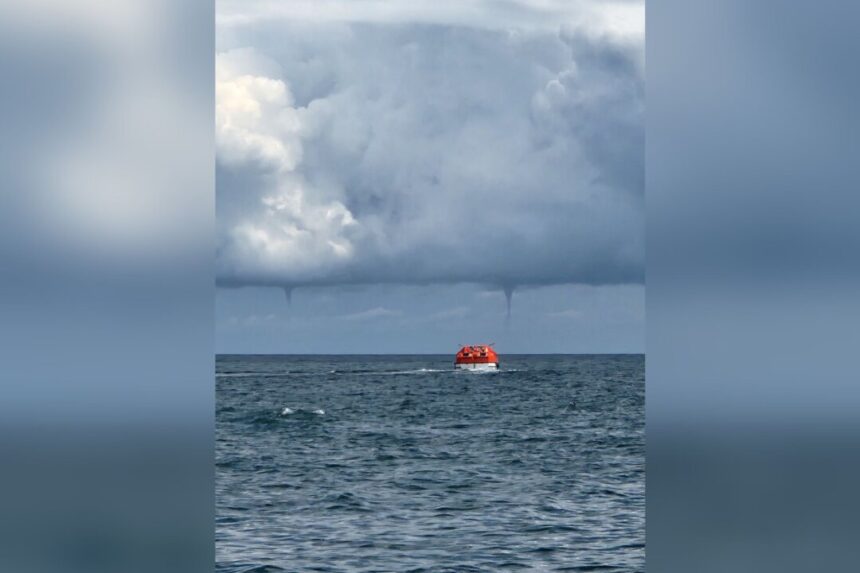Marc-André Bourgeois-Gaudet was out on his boat near Îles-de-la-Madeleine, Que., last Friday when he witnessed several funnel clouds descending from the sky like tornadoes.
As he approached, he encountered heavy rain unlike anything he had ever experienced. “It was like having a waterfall fall on my head,” he described.
The Northern Tornadoes Project, located at Western University, has verified that multiple waterspouts—also known as tornadoes over water—occurred recently in Quebec and Nova Scotia.
Both Îles-de-la-Madeleine and Inverness, N.S., reported the weather phenomenon on Aug. 23, while another waterspout formed over the Lake of Two Mountains near Vaudreuil, Que., west of Montreal, two days later. Additionally, there have been several waterspouts in Ontario in August, with most occurring in the Great Lakes region.
David Sills, executive director of The Northern Tornadoes Project, explained that a waterspout is essentially a tornado that forms over water instead of land.
“A tornado is a rotating column of air that extends from the lower part of the storm cloud to the surface, with the surface being either land or water,” he clarified.
Waterspouts have been making headlines in recent weeks, especially after a superyacht sank during a storm off Sicily last week, claiming seven lives. Italian civil protection officials suggested that the storm might have caused a waterspout at the exact location where the British-flagged Bayesian was anchored.
While a waterspout can potentially cause damage if it directly hits a boat, Sills mentioned that most waterspouts are less destructive compared to their land-based counterparts. He noted that most waterspouts have wind speeds ranging from 90 to 130 kilometres per hour—considered weak in tornado terms—and are typically classified as EF-0.
Due to cooler air over lakes suppressing thunderstorm activity, Sills explained that it’s uncommon for a strong tornado to emerge from a lake. However, instances like a tornado forming as a waterspout over Lake Huron in 2011 before hitting Goderich, Ont., as a destructive F3 have occurred.
While waterspouts can potentially sink a boat, Sills mentioned that most are slow-moving enough to be avoided.
Bourgeois-Gaudet, hailing from Îles-de-la-Madeleine, shared that he never felt truly threatened during his encounter with the waterspout. He noted that although the water was a bit rough, the wind wasn’t strong enough to pose a risk of capsizing. “The most challenging part was being able to see where I was going due to the heavy rain,” he added.
Sills revealed that since the inception of the tornadoes project in 2017, around 15 waterspouts are documented annually. This year, they have already recorded 18 confirmed or suspected events, slightly surpassing the average so far.
The waterspouts in Quebec garnered significant attention, likely because they are reported less frequently compared to the Great Lakes region. Sills mentioned that some of this year’s Quebec waterspouts are the first to be officially documented along the St. Lawrence River since 2017, attributing this to increased visibility and documentation, often on social media.
“The conditions certainly can occur there,” he affirmed, adding, “I wouldn’t say it’s rare, just not well-documented.”
He highlighted that due to enhanced reporting, the number of tornadoes documented in Canada has risen from approximately 60 per year before 2017 to nearly 100 on average.








